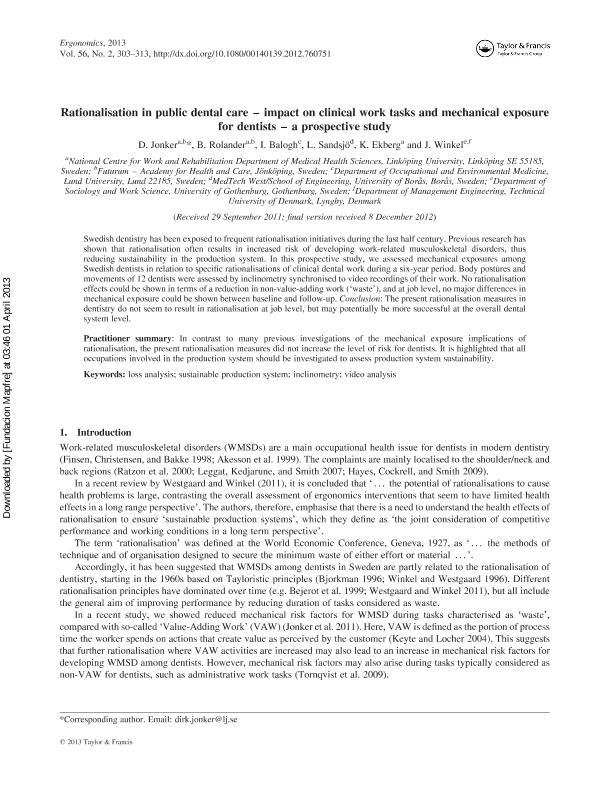Rationalisation in public dental care - impact on clinical work tasks and mechanical exposure for dentists - a prospective study

Contenido multimedia no disponible por derechos de autor o por acceso restringido. Contacte con la institución para más información.
| Tag | 1 | 2 | Valor |
|---|---|---|---|
| LDR | 00000cab a2200000 4500 | ||
| 001 | MAP20130010847 | ||
| 003 | MAP | ||
| 005 | 20130401175646.0 | ||
| 008 | 130401e20130204esp|||p |0|||b|spa d | ||
| 040 | $aMAP$bspa$dMAP | ||
| 084 | $a875 | ||
| 245 | 0 | 0 | $aRationalisation in public dental care - impact on clinical work tasks and mechanical exposure for dentists - a prospective study$cD. Jonker...[et.al] |
| 520 | $aSwedish dentistry has been exposed to frequent rationalisation initiatives during the last half century. Previous research has shown that rationalisation often results in increased risk of developing work-related musculoskeletal disorders, thus reducing sustainability in the production system. In this prospective study, we assessed mechanical exposures among Swedish dentists in relation to specific rationalisations of clinical dental work during a six-year period. Body postures and movements of 12 dentists were assessed by inclinometry synchronised to video recordings of their work. No rationalisation effects could be shown in terms of a reduction in non-value-adding work (waste), and at job level, no major differences in mechanical exposure could be shown between baseline and follow-up. Conclusion: The present rationalisation measures in dentistry do not seem to result in rationalisation at job level, but may potentially be more successful at the overall dental system level. | ||
| 773 | 0 | $wMAP20100019818$tErgonomics : the international journal of research and practice in human factors and ergonomics$dOxon [United Kingdom] : Taylor & Francis, 2010-$x0014-0139$g04/02/2013 Volumen 56 Número 2 - febrero 2013 , p. 303-313 |

